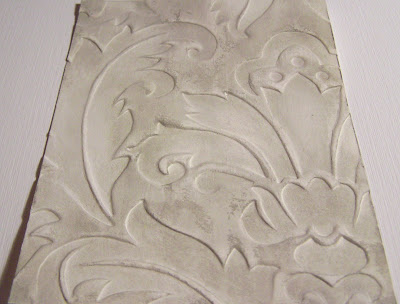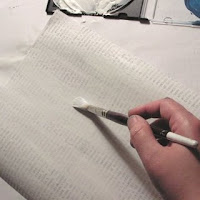WARNING!!!: You got a brain... USE IT!
Building and working with a foundry furnace is "NOT" child's play. It
can be very dangerous and if 'you' screw-up don't come crying back to
me! If you don't know what you're doing and didn't take the time to read
and study all the safety procedures that are available on the net, and
you get hurt that's 'your' problem. You are responsible for yourself
and your own actions and safety.
--- "NOT ME!" ---
One thing you should know is that building a furnace
is 'NOT' a weekend project..... You can figure on spending at least a
month putting one together, (The right way.)
Of course if you're loaded with extra bucks just burning a hole in your pocket there are shortcuts you can do.
Doing my research on the net, I've found 100's of designs. Some were just fire brick stacked into a circle on a steel rack another was nothing more than refractory jammed into nothing more than a cut in half milk jug. :-(
The same thing applies to making green sand for your molds. Everyone has their own "PET" formula for making their sand.... AND many won't give out their 'secret' formula.
My designs are not new... just modified the basic concepts to my own ideas and I think improvements.
I can say without a doubt I've LEARNED A LOT!!! Of what NOT to do and things I FORGOT to do, and some things I SHOULD HAVE DONE, so if you try to do this understand right off that this is a learning process and you WILL make mistakes.
I'm not sure just what I can show you in the way of pictures, after all it's just a box of sand and clay mixed together.
Of course if you're loaded with extra bucks just burning a hole in your pocket there are shortcuts you can do.
Doing my research on the net, I've found 100's of designs. Some were just fire brick stacked into a circle on a steel rack another was nothing more than refractory jammed into nothing more than a cut in half milk jug. :-(
The same thing applies to making green sand for your molds. Everyone has their own "PET" formula for making their sand.... AND many won't give out their 'secret' formula.
My designs are not new... just modified the basic concepts to my own ideas and I think improvements.
I can say without a doubt I've LEARNED A LOT!!! Of what NOT to do and things I FORGOT to do, and some things I SHOULD HAVE DONE, so if you try to do this understand right off that this is a learning process and you WILL make mistakes.
I'm not sure just what I can show you in the way of pictures, after all it's just a box of sand and clay mixed together.
- What green sand boils down to is this:
- The finest sand you can find (100g to 175g or higher)
for the even better finishes try and stay above 150g - well drillers clay (Bentonite) or Bentone
- water with Bentonite or oil with Bentone
- Beach or river washed sand
- Sand box sand
- Sandblast sand
THE CLAY:
If you have a Well Driller in your area you can probably buy 100# bags for about 10 bucks, and this will save you a lot of work. The Clay is called: Bentonite
Fireclay is 'not' the same as well driller's (Bentonite) clay. I guess Bentonite Clay is denser, because you use a lot less.
Some molders have taken bags of cat litter and ground it into a powder using a small electric coffee mill grinder (Please check with the boss before you take "HER" grinder for your project ;-) ), or making a ball mill and using marbles to grind it up. (We're talking industrial size marbles 3/4" to 2-1/2" in diameter.)
"MARBLES?!?!?!?
"YES!" Marbles...
What is a marble? "GLASS"
What is glass made from?!?! "MELTED SAND", so you have no contamination.
OK!? So what's a "Ball Mill"?
A ball mill is nothing more than some kind of a drum/ container, (A 5 gallon pail works good if it has a lid that snaps on tight.), that you can seal; then it's laid on rollers and rotated at about 30 to 50 rpm's for hours at a time. The marbles break up the clay into a fine powder to be mixed with the sand.
A WORD OF CAUTION HERE: This makes a very fine
powder, so "USE" a dust mask when every you are working with this clay
and that goes for adding it to your sand as well.
Ok, now we have the problem that goes down thru the ages... "Getting the sand to thoroughly bonded with the clay"
You can do this in several ways....
- By Hand -- very labor intensive!
- By machine -- This could run into some "BUCKS"!
- Or a combination of both
BY HAND:
You take your sand and clay and sit there for hours mixing it.. turning it over and over till the clay and sand are uniform and then you slowly add just enough water or oil, so when you grab a handful and squeeze it. It compresses into a thick hotdog like shape. When you open your hand you should see the impression of your fingers in the sand and there's very little loose sand left in your hand, (That's part 1). Then when you 'Snap" it in half. If it breaks clean and doesn't crumble or fall apart; "YOU GOT IT!"
The old "Sand Crabs" as they were called; used to do everything right on the floor. Making long windrows and using a long flat blade shovel, scooping up a shovel full and flipping it over and smacking it down with the back of the shovel after hours of that he would slowly start adding his water or oil and start all over again till it was just right to his hand compression test.
Now doesn't that sounds simple --- "RIGHT?!?!" All You'll need is at least a 150 to 250 pounds made up before you even think about ramming up your first flask.
(Flasks are another topic, but the bigger the part the bigger the flask and the more sand you'll need to fill it. A 12" X 16" X 6" flask will take about 80 pounds DRY weight to 150 pounds WET weight of sand. Figure on getting a medium size garbage can to hold your mixed sand)
BY MACHINE:
The machine to make your green sand is called a MULLER.
They come in all different types and sizes; but what it basically does is compresses the clay onto the grains of sand, (coating each grain of sand with a layer of clay).
A common type is a big heavy walled drum with 2 rotating wheels (Normally 25 to 75 lbs. each wheel), and scrapper blades. The wheels compress the clay and sand together and the scraper blades break it up and stirs it around. After a few hours of dry mixing you then start adding in your water or oil. This can be a very expensive machine to build.
THE POORMANS MULLER:
Another type of muller is like the old style cement mixers:
They have the tub and then a horizontal cross shaft with paddles in it. You might be able to find an old one laying around in some junk yard or check at a cement contractor and see if they've got one they don't use any more. You'll have to modify the paddles and maybe replace a bearing or two, but it's a lot cheaper. Forget about the newer styles with the rolling drum, they turn to fast and the sand/clay mix is just to thick once you start adding in the water or oil.
OK! So now let's talk about the 'secret' recipes that are out there.
Some recipes go by weight and others go by volume and it can get confusing. I had one that went by both ways. You can keep it very simple at the start and after you learn more about it; start adding in the other enhancers such as:
- Sea Coal
- Silica Flour
- wheat flour
- wood flour
- corn flour
- sanding dust from hardwood
- Linseed Oil
- marine grade 2 cycle oil
NOW you have to decide on how fine a surface finish do you want on your casting? Plain Jane ? What ever comes out is fine... or the smoothest finish you can get.
It all comes down to the sand you use. You can get 100g to 175g or higher. The coarser the sand the rougher the casting surface. (There are other tricks you can do, but that's a subject for another page.)
If you want the finest surface you can get then you got a little work to do. You need to find the finest mesh window screen and make a small frame and staple or nail it on then sift all that sand -- Keeping the coarser grain sand for the rough casting and use just the sifted fine grain sand for the better surface quality castings, also check your clay as well, it will lump up if it's been sitting in some warehouse and got damp though condensation it too has to be run thru the screen so everything is consistent.
When mixing your sand you want enough clay to bind the sand together, but not so much that it chokes off the natural venting/breathing of the sand and the same holds true for the water or oil. You want it to feel 'damp' but not wet in your hand. Soak a wash rag then ring it out "HARD"... That's what you what your sand to feel like.
Now you have to think in 'mass'; Example: If you take 25 lbs. of clay and 100 lbs. of sand that's not 25% clay because you have a total "mass" of 125 lbs. so that's only 20% (A good starting point for a blend is 10%), although you could work up to that slowly and keep checking your mix by the hand compression test. (Note: A lot depends on the grade of sand and the type of clay you're using. Fireclay and Kitty Litter is "not" Bentonite clay! They are different and the percentages used will be different. But there are caster that use both.) To much clay and you got 'mud' to little and it won't hold it's shape or do a clean break and to wet a mixture and the clay will wash off the sand and you'll wined up with mumps of clay in your mix; use as little water as possible, a 125 lb. batch will use less than a gallon of water or 3 quarts of 2 cycle marine oil.
Start out by making small batches of 10 lbs. and see what blend works best, then you can make your larger batch. Figure on getting 4 -- 80 lb. bags of sand and 2 -- 100 lb. bags of clay to start with. (This clay and sand can also be used in your refractory mix for lining the furnace.)
If you have to adjust your mix -- remember to do it slowing... never add more than 1% of the 'mass' at a time. Using the above 125 lbs. -- that's 1-1/4 lbs. BUT that might mean only a cup or two -- volume vs weight.
OK, Standard rule of thumb in mixing:
- Mix dry -- clay and sand till completely blended.
- You can to add the water by using a small garden sprinkling can or add the oil a little at a time.
- Add in small amounts then mix completely.
- Use as little water or oil as possible.
- Wait at least a couple of hours or more before doing the hand compression test
in fact waiting till the next day is even better as it take the clay a while
to soak up the water or oil. - Store in a container that has a tight lid.
- 'IF' your sand has been sitting in the storage container for any length of time --
remix it and test it before using.
Now here's the simplest recipe I can give you:
- 100 lbs. of sand
- 12 lbs. Bentonite
- 7 lbs. water (about a gallon)
Ams/Oil makes a very good synthetic, you can check out their online store is here.
K-Bond - Oil Bonded Casting Sand
Developed at Kent State.
100 lbs. Sand Using F110 from US Silica
6 lbs. Bentone 34 Made by Rheox
3 lbs. Indopol L-100 or synthetic 2-stroke oil (2 US quarts = 3 lbs)
Made by BP (or use AMS/OIL or Penzoil smokeless 2-stroke oil)
*0.2 lbs. Isopropyl alcohol (3.2oz or 91grams) *(Note: That's Pounds)
or 91% Rubbing alcohol
Mix the sand, bentone thoroughly and then the oil. You can do 10 lb. batches by hand with good results. The bentone is very dusty and the sand contains silica so wear a dust mask! Add in the alcohol and mix thoroughly. Done!
The sand will be like cookie dough at first. It will be much easier to handle when it is a day old and will get easier to use with time and use. The sand gets powdery after it sits and it is best to mull it or warm it before use. When green strength starts to fade, add in some alcohol.
http://www.imarketingcenter.com/greensand.html
 As
part one of my mission to make my studio practice healthier for me and
any future babies, I decided to give electrolytic copper etching a try.
It turns out it’s so easy to do I am surprised more people haven’t tried
it. I downloaded an article from
As
part one of my mission to make my studio practice healthier for me and
any future babies, I decided to give electrolytic copper etching a try.
It turns out it’s so easy to do I am surprised more people haven’t tried
it. I downloaded an article from 






























+Colour+edges+of+the+chipboard+%28i+painted+with+gesso%29.JPG)
+To+create+a+pocket+adhere+one+side+of+acetate+only+%28punch+it+%26+edge+with+copic+if+you+like%29.JPG)

















